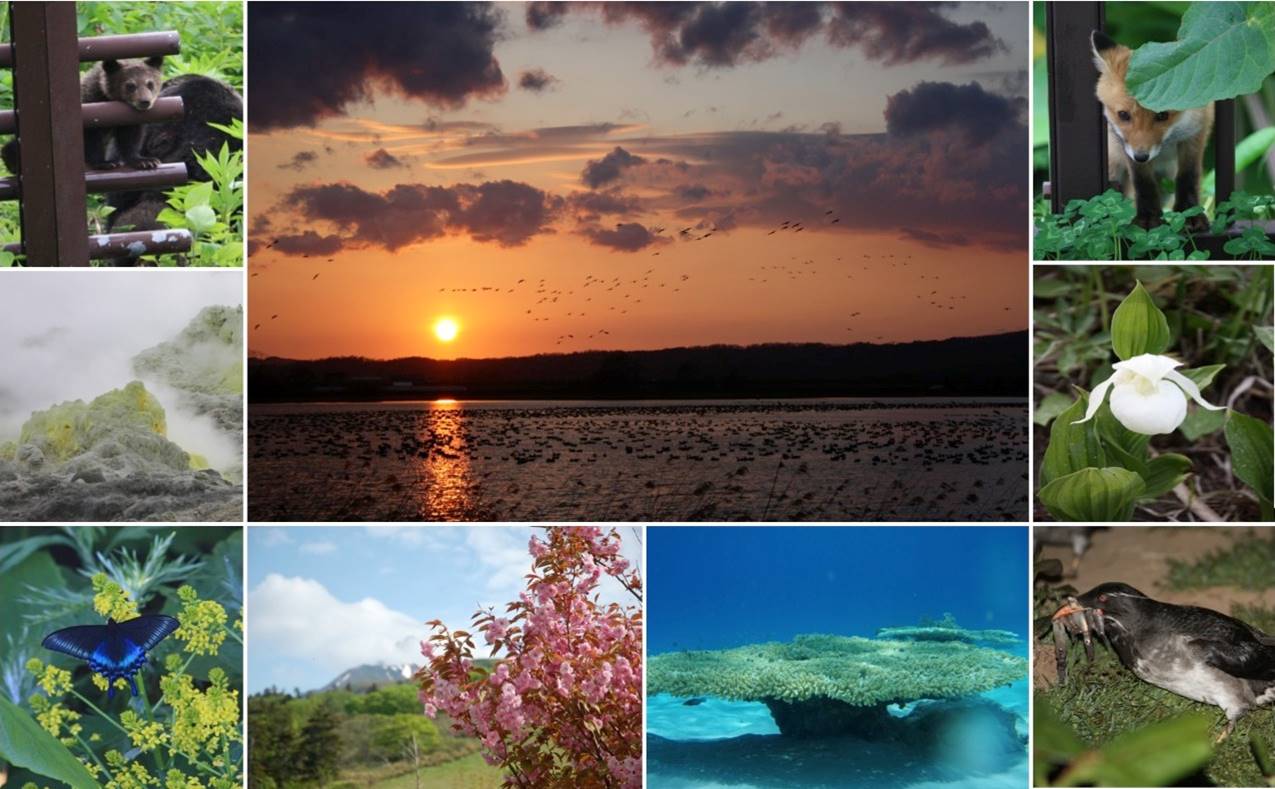Why we study diverse animals and topics?
Japan is listed as a biodiversity hotspot (details from Conservation International). The fauna and flora of Japan are very rich but are also suffering from human activities. For example, Japan is home to around 90 mammal species and about half of them are endemic. More than 4,400 fish species have been documented (including marine and freshwater species), which is as much as 18% of the species currently described in the world. Overall, about a quarter of the vertebrate species living in the Japanese archipelago are endemic (excluding marine fishes). At the same time, as you can guess from the size of the Japanese population (more than 120 million people), many animals and plants have been threatened by human activities. Forty-four to sixty-five percent of vertebrates (excluding marine fishes) are listed in the Japanese Red Data Book. Thus, we need to protect our precious wildlife. Also, the great diversity provides good opportunities to study interesting natural histories.
Ecological research has become increasingly popular in Japan. There are now many great Japanese ecologists, especially in the younger generations (really!). However, theoretical and experimental works is much stronger here than field-based empirical studies. Long-term and large-scale field ecological research is especially way behind. In fact, there are only a small numbers of universities or research institutes in Japan that study natural populations of birds and mammals.
Hokkaido is considered the wildest area in Japan. This northernmost island has been developed most recently and human population density is the lowest. Density of brown bear, on the other hand, is one of the highest in the world: currently, an estimated 3,000-5,000 individuals inhabit this relatively small island. There are many other charismatic animals in Hokkaido, such as Blakiston’s fish owl, red-crowned crane, Stellar Sea Eagle and Sakhalin taimen. Many people come to Hokkaido for the wildlife (including us!) and we would like to establish our laboratory as a representative for studying the dynamic nature of wildlife.
One more reason (…and actually the main reason)
As mentioned above, there are few places where students can study wildlife biology especially mammals and birds, which generally are more popular than other taxonomic groups. Unlike the US and Europe, Japanese graduate students are not paid (i.e. no salary) but pay a lot of tuition. As a result, I’d like to let students study what they want. I believe that this also broadens my knowledge and perspective – although it is often tough 😀 but of course, much more fun!
Pros and cons
Studying diverse themes and organisms will broaden your perspective. This, however, may have negative effects. Scientific studies, at least in the past century, have been toward the deepening of specific fields (i.e. specialized) rather than studying “shallow and wide”. Also, it is generally difficult to conduct high-quality science starting from the pure curiosities of students (although there are some!) especially for field-based science. From a supervisor’s point of view, getting enough research funding for a variety of diverse themes is a challenge.
Taking these into consideration, now we are focusing on a few main projects (themes/species/study sites) with several subthemes. Subthemes include seminal studies, studies initiated by the strong determination and passion of students, studies important for local issues (e.g. conservation), and studies which are merely intuitively interesting. The main projects are metapopulation ecology of stream salmonids, conservation and behavioral ecology of urban red squirrels, and field ornithology of Japanese tits. See more details in Research .
If you are interested…
If you are interested in joining our lab, there are several ways. Firstly, I recommend short-term visits to see how research is going, what the atmosphere of the lab is like, and how the life in Japan is. JSPS (Japan Society for the Promotion of Science) offers several programs, including a summer exchange course (details here: http://www.jsps.go.jp/english/e-summer/). Coming as a pos doc is another good way since JSPS also provide good scholarships (details here: http://www.jsps.go.jp/english/e-fellow/postdoctoral.html). Joining as a master or a doctoral student is of course possible but requires some costs. As mentioned above, most graduate students in Japan are not paid but pay expensive tuitions and entrance fees. In addition, living in Japan is not cheap. There are several scholarships (an excellent summary is available here: http://www.jasso.go.jp/study_j/scholarships_sfisij_e.html) but acceptance the rate is low (about one-thirds of foreign students have some scholarships). Information on entrance exams is available on this website (http://www.ees.hokudai.ac.jp/modules/top/entrance2.html?easiestml_lang=en). The exam can be competitive.
In any case, research topics may be restricted because doing fieldwork is generally difficult for non-Japanese people, e.g. driving a car, negotiating with local people, etc. So, you’ll basically join one of the projects and work with some students or pos docs. Or, if you have good skills, for example, in genetic analysis and statistics, that would be great. I can promise that everyone in the lab is kind and has a good personality and communication skills (though the average English speaking is elementary level). Please contact Itsuro Koizumi if you are interested.

